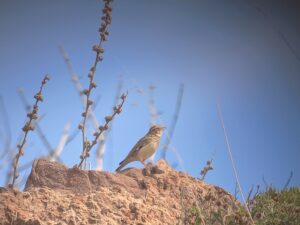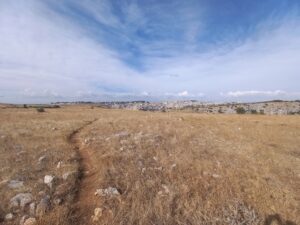Birding Matera
Continuously occupied for some 11,000 years, Matera was designated a European Capital of Culture in 2019 in recognition of its long history, unique architecture, and distinctive foodways.
The most famous feature of Matera are the “sassi,” a complex of dwellings excavated in the area’s soft stone. The oldest date to around 7000 B.C., when humans began to enlarge the area’s natural caves into livable spaces. Matera’s sassi are listed by UNESCO as a World Heritage Site.
As you wander the old city, you cannot fail to see Matera’s best-known nonhuman residents, the lesser kestrels. More than 95% of the entire Mediterranean population of this beautiful little raptor nests in urban settings, and Matera is home to the oldest city-breeding colony in the world, numbering a breathtaking 1,000 pairs.
 The rocky landscape around Matera is one of the most spectacular in Europe. Limestone cliffs, deep river gorges, and ancient caves provide spectacular views and a wonderful backdrop to some of the best birding in southern Italy. The high banks of the Gravina River are an excellent place to look for raptors such as black and red kites, Egyptian vultures, and short-toed snake eagles; there are even records of the rare lanner falcon. The rocky hillsides are home to blue rock thrushes, western black-eared wheatears, and alpine and pallid swifts. Both Italian and Spanish sparrows occur here, with brighter colors supplied by some of the most eagerly sought of Italian birds, the Eurasian roller, European bee-eater, and Eurasian hoopoe.
The rocky landscape around Matera is one of the most spectacular in Europe. Limestone cliffs, deep river gorges, and ancient caves provide spectacular views and a wonderful backdrop to some of the best birding in southern Italy. The high banks of the Gravina River are an excellent place to look for raptors such as black and red kites, Egyptian vultures, and short-toed snake eagles; there are even records of the rare lanner falcon. The rocky hillsides are home to blue rock thrushes, western black-eared wheatears, and alpine and pallid swifts. Both Italian and Spanish sparrows occur here, with brighter colors supplied by some of the most eagerly sought of Italian birds, the Eurasian roller, European bee-eater, and Eurasian hoopoe.
